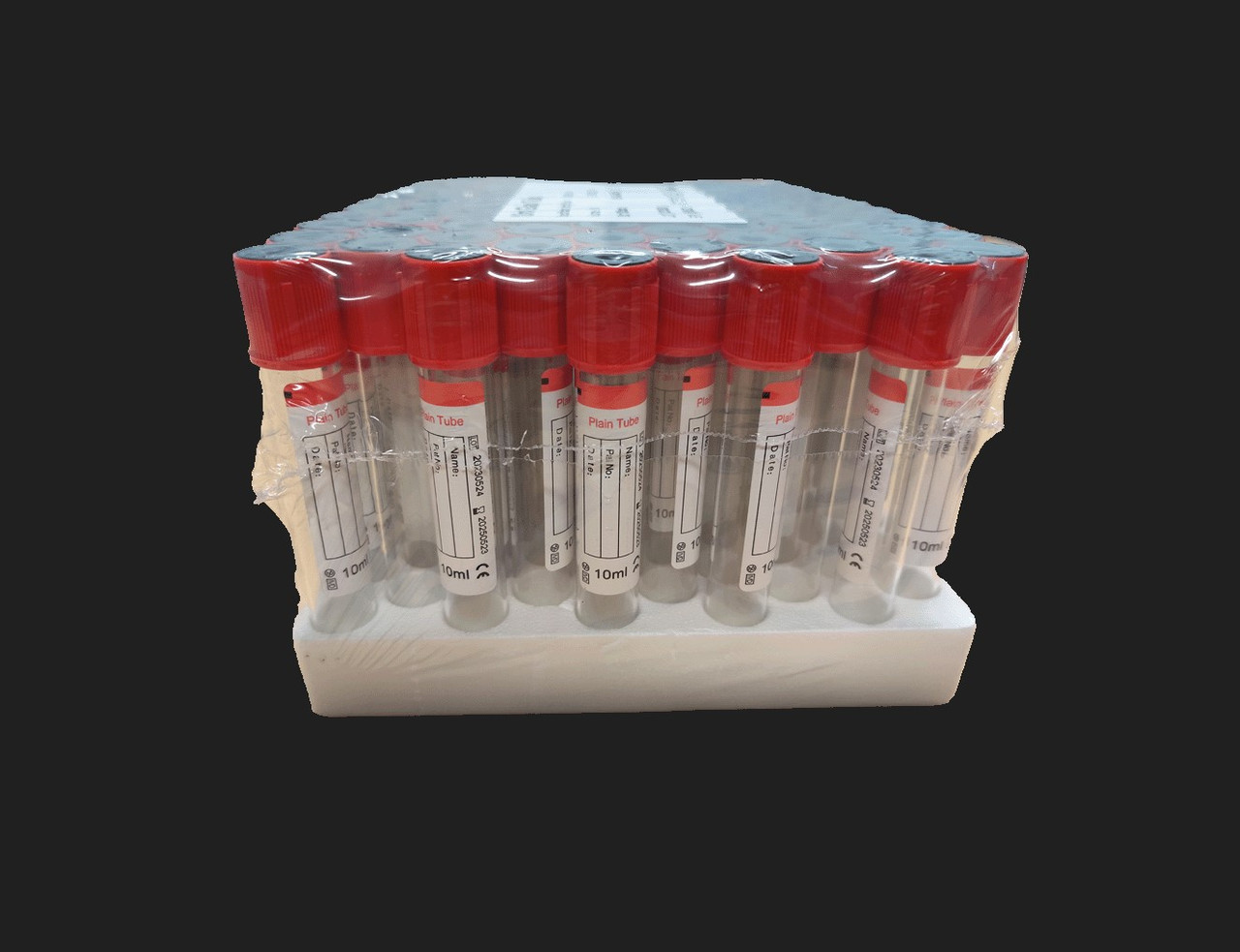The Importance of Selecting the Right Blood Collection Tubes
Posted by Alyx Weaver on 10th Jul 2024
Background on Blood Collection
Blood collection is such an elementary concept from an outside perspective that sometimes a researcher doesn’t know how to react once it becomes a necessity.

Let’s say you are doing any type of translational or clinical research, and right now, you don’t use blood collection as part of your experimental design. That’s subject to change!
Blood tests are often a useful way of validating other pieces of experimental evidence, but blood collection can be a sticky process.
The issue to be aware of is that blood coagulates, and sometimes you need it to…others, you don’t.
In this article we’ll talk about the types of blood collection tubes available and when to use them.
Types of Blood Tubes:
Serum Tubes
Serum tubes are designed to collect the liquid portion of blood without the clotting factors included.
These tubes do not prevent clotting of contents and are intended for short-term storage of blood samples.
These tubes can be identified by red, red and gray mottled, or gold caps. They may or may not contain particles that assist with clot activation.
EDTA Tubes
Ethylenediaminetetraacetic acid (EDTA) tubes are used to collect whole blood and preserve it so that it can be processed later.
These tubes are often used for trace metal studies or plasma isolation, depending on the other components.
These tubes come with either lavender or pink caps. Blood stored in these tubes cannot be used for coagulation tests.
Heparin Tubes
Heparin tubes are another type used for collection of whole blood and plasma. They prevent clotting by inhibiting thromboplastin and thrombin.
These tubes have intense or pale green caps. These tubes are typically used for tests that require immediate attention.
Heparin has its impact through antithrombin pathways and also chelates calcium.
Other Specialized Tubes
Other types of tubes with preservatives meant for assisting with isolation of ions and specific blood nutrients exist.
This is a very abbreviated list. More in-depth lists can be found on clinical diagnostic websites, such as this one by LabCE.
Common types of blood tests performed in clinical labs:
- White blood cells
- Red blood cells
- Platelets
- Whole blood
- Clotting factors
- Glucose
- Metals
- Blood antigens
- Viruses
- Gasses
- Cofactors and blood ions
- Drugs
Role of Additives in Blood Tubes:
Potassium EDTA: EDTA is a chelator that inactivates the thrombin clot formation pathway by making calcium less available as a cofactor.
Sodium citrate: Sodium citrate also chelates calcium, but the anticoagulant effects can be reversed for downstream testing of clot formation.
Lithium or sodium heparin: Heparin is an anticoagulant and assists antithrombin in blood and also sequesters calcium.
Sodium fluoride and potassium oxalate: These additives inhibit glycolysis and clot formation for blood glucose testing.
Additional additives may be found in combination with these to tailor collection tubes to specific tests, like the addition of polyester in EDTA tubes for PCR tests.
Risks of Interchanging Blood Tubes
What happens if I use the wrong tube?
Blood that has been improperly harvested is often useless and cannot be processed for downstream uses.
It’s conceptually simple, but there are a lot of nuances to be mindful of.
A prime example of how specialized tube types are is the difference between potassium EDTA and sodium citrate tubes.
They both chelate calcium, but only sodium citrate can be used for clotting factor tests because the addition of calcium restores clot formation.
Lavender tubes do not allow this, and blood collected in these tubes can never be used to test clot formation.
Another example of a potential mishap is the use of a red-capped tube with a gel barrier for drug testing.
Studies have shown that samples kept in gel barrier tubes are more likely to give false negatives because certain molecules stick to the gel.
Best Practices for Tube Selection: Guidelines to Ensure Correct Tube Selection
When selecting tubes for the laboratory, make sure you have all the bases covered. Tubes without anticoagulants are limited, but essential for drug and viral testing.
Knowing the ins and outs of applications takes time and effort, and this handy guide just scratches the surface of tube selection.
Here at Stellar Scientific we carry standard red-capped tubes with no additives for drug testing, routine chemistry, and viral titers.
We also have lavender-topped tubes with EDTA for CBC and most routine chemistry tests.
Our bulk sizes give you more for your money, and on top of that we offer laboratory accessories that make organizing your work a lot easier.
Go browse our online catalog of blood collection supplies and accessories today, and let us know if you have any questions through the contact us page!
Footnotes:
__________________________________
- “NCI Drug Dictionary.” Comprehensive Cancer Information - NCI, www.cancer.gov/publications/dictionaries/cancer-d... Accessed 10 July 2024.
- Ercan, M., Fırat Oğuz, E., Akbulut, E. D., Yilmaz, M., & Turhan, T. (2018). Comparison of the effect of gel used in two different serum separator tubes for thyroid function tests. Journal of clinical laboratory analysis, 32(6), e22427. www.cancer.gov/publications/dictionaries/cancer-d...
- “Blood Collection Tubes.” Blood Collection Tubes - LabCE.Com, Laboratory Continuing Education, www.cancer.gov/publications/dictionaries/cancer-d... Accessed 10 July 2024.
- “Blood Specimens: Chemistry and Hematology.” Labcorp, www.cancer.gov/publications/dictionaries/cancer-d... Accessed 10 July 2024.
- “Specimen Requirements/Containers.” Specimen Requirements/Containers | Department of Pathology | School of Medicine | University of California, Irvine, 25 Jan. 2024, www.cancer.gov/publications/dictionaries/cancer-d...
- Shabnam, I., D S, C., & B C, J. (2014). Ethylenediaminetetraacetic Acid (EDTA) - dependent pseudothrombocytopenia: a case report. Journal of clinical and diagnostic research : JCDR, 8(10), FL03–FL4. www.cancer.gov/publications/dictionaries/cancer-d...

